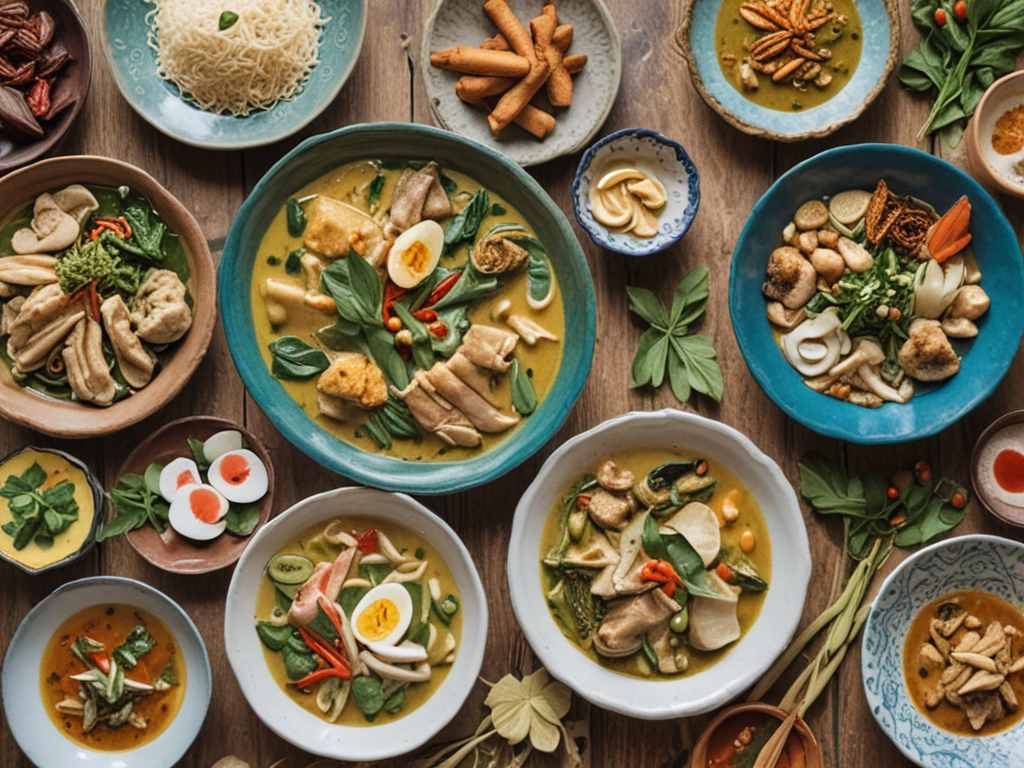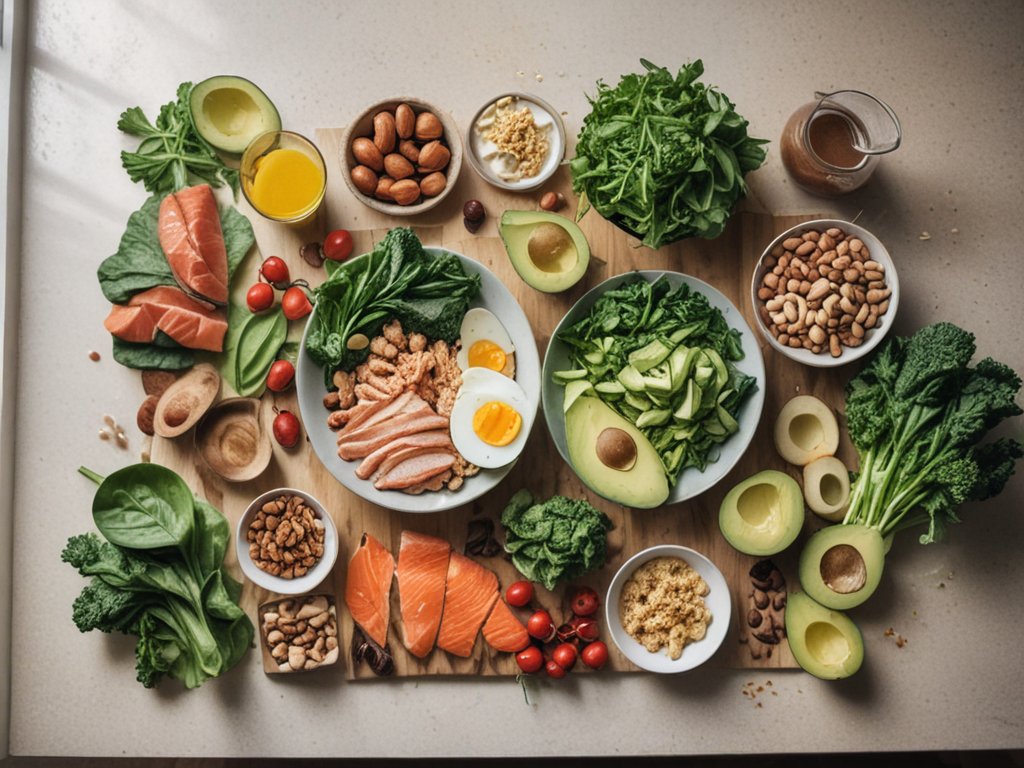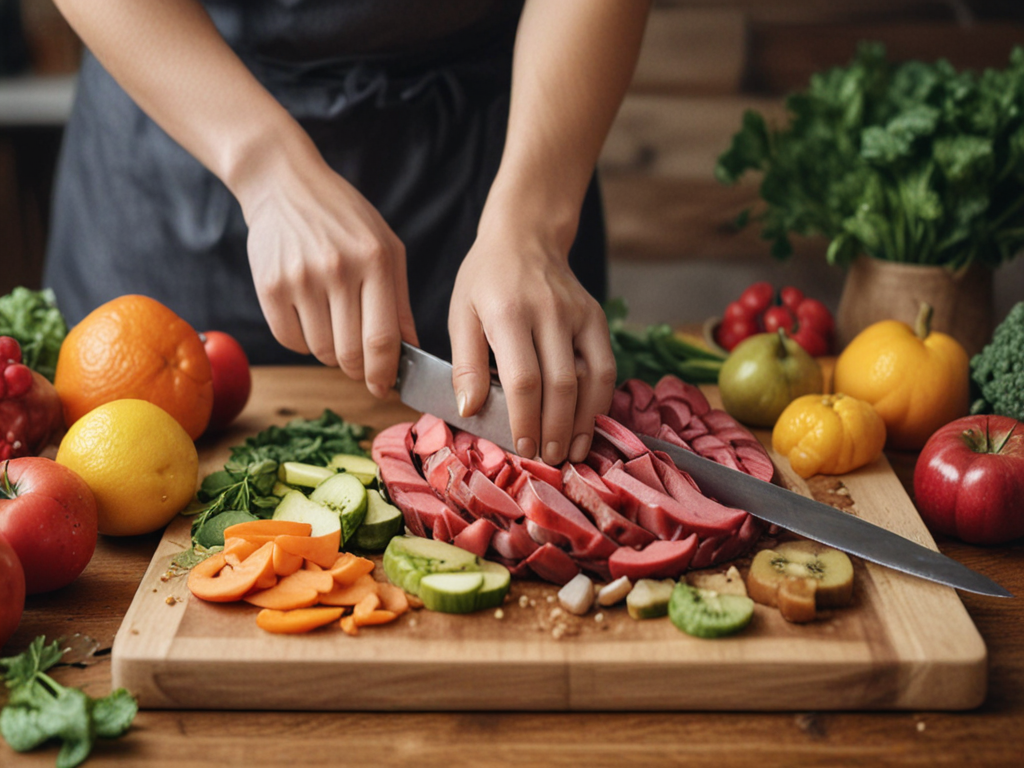
Strolling through the bustling streets of Bangkok, I once stumbled upon a small eatery where the aroma of Thai spicy curries wafted through the air, tempting my taste buds with its rich blend of flavors. As I savored each bite, I realized that Southeast Asia’s culinary landscape is a tapestry woven with diverse ingredients and techniques that have captivated food enthusiasts worldwide. From the aromatic Vietnamese noodle soups to the fiery Indonesian sate skewers, each dish tells a story of tradition and innovation waiting to be explored further.
Thai Spicy Curries
Exploring the vibrant culinary landscape of Southeast Asia, Thai Spicy Curries stand out as a bold and aromatic delight for the senses. The heart of these curries lies in the perfect blend of Thai chili and curry paste, creating a symphony of flavors that dance on the taste buds. Thai chilies, known for their fiery heat, infuse the curry with a spicy kick that is balanced by the rich and creamy texture of the curry paste. The curry paste, a mixture of various herbs and spices like lemongrass, galangal, and kaffir lime leaves, adds depth and complexity to the dish.
One cannot help but be captivated by the intricate balance of flavors in Thai Spicy Curries. The fiery heat of the Thai chili, tempered by the creamy curry paste, creates a harmonious blend that is both bold and comforting. Each bite is a journey through layers of spice, sweetness, and umami, leaving a lasting impression that lingers on the palate. Thai Spicy Curries truly encapsulate the essence of Thai cuisine – vibrant, flavorful, and utterly satisfying.
Vietnamese Noodle Soups
Vietnamese Noodle Soups offer a tantalizing medley of flavors and textures, showcasing the art of broth-making in Vietnamese cuisine. The key to these soups lies in the diverse broth variations and noodle textures used. Pho, the most renowned Vietnamese noodle soup, typically features a clear, aromatic broth made by simmering beef bones, charred onions, and spices like star anise and cinnamon for hours. This results in a delicate, yet flavorful base that complements the rice noodles perfectly.
Regional ingredient influences play a significant role in Vietnamese noodle soups. For instance, in Northern Vietnam, pho is often served with fewer herbs and bean sprouts, allowing the purity of the broth to shine through. In contrast, Southern Vietnamese noodle soups are characterized by the addition of a variety of fresh herbs, lime, and bean sprouts, creating a more vibrant and complex flavor profile. Soup accompaniments like fresh lime, Thai basil, and chili peppers add a zesty kick that elevates the overall experience of enjoying Vietnamese noodle soups.
Indonesian Sate Skewers
Indonesian Sate Skewers, a popular street food in Indonesia, showcase the harmonious blend of flavors and aromatic spices characteristic of Indonesian cuisine. These grilled meat specialties are a confirmation of the rich culinary traditions of Indonesia, where each bite encapsulates a burst of bold and vibrant flavors. Here are four intriguing aspects of Indonesian Sate Skewers:
-
Marinade Magic: Indonesian Sate Skewers are marinated in a tantalizing mixture of soy sauce, garlic, ginger, and a touch of palm sugar, creating a perfect balance of sweet, salty, and savory notes.
-
Peanut Perfection: The accompanying peanut sauce, known as ‘bumbu kacang,’ is a luscious blend of ground peanuts, coconut milk, tamarind, and chili that elevates the sate to new heights of deliciousness.
-
Cultural Connection: Savoring Indonesian Sate Skewers is not just a culinary experience but a cultural one, reflecting the country’s diverse heritage and culinary influences.
-
Street Food Delight: Whether enjoyed from a bustling food stall in Jakarta or a quiet corner in Bali, Indonesian Sate Skewers offer a true taste of Indonesia’s vibrant street food scene.
Malaysian Nasi Lemak
I’ve savored Malaysian Nasi Lemak, a dish that epitomizes the delicate balance of flavors in Southeast Asian cuisine. The coconut-infused rice, cooked to perfection, provides a fragrant and comforting base for the dish. Paired with the sambal, a spicy chili paste, this dish offers a delightful kick that elevates the overall experience of each bite.
Coconut Rice Perfection
Crafting the perfect Malaysian Nasi Lemak involves mastering the art of preparing coconut rice to achieve the ideal balance of flavor and texture. When it comes to creating this aromatic dish, here are four essential steps to guarantee your coconut rice is nothing short of perfection:
- Choosing the Right Rice: Opt for long-grain jasmine rice to attain that fluffy texture that is characteristic of Nasi Lemak.
- Infusing Creamy Coconut Milk: Cook the rice in a mixture of coconut milk and water to impart a creamy richness and tropical flavors.
- Balancing Flavors: Add pandan leaves during cooking to infuse a subtle floral note that complements the coconut’s sweetness.
- Perfecting Texture: Allow the rice to steam after cooking to make sure each grain is light, separate, and full of coconut essence.
Sambal Spice Kick
Developing the perfect balance of spicy flavors in the sambal sauce is essential for elevating the taste profile of Malaysian Nasi Lemak. This spicy condiment plays a central role in Malaysian culinary traditions, adding a fiery kick to the fragrant coconut rice, crispy anchovies, roasted peanuts, and succulent fried chicken that make up this iconic dish. The art of creating sambal involves blending chili peppers, shrimp paste, garlic, ginger, and other aromatic ingredients, released to perfection to ignite a symphony of flavors. The sambal’s bold and complex taste not only enhances the overall dish but also reflects the diverse cultural influences that shape Malaysian cuisine. Embracing the sambal spice kick is a celebration of the rich tapestry of flavors that define Southeast Asian gastronomy.
Filipino Adobo Delights
In Filipino cuisine, the art of preparing Adobo dishes holds a revered place, showcasing a harmonious blend of savory and tangy flavors that captivate the palate. Savory marinades are at the heart of Filipino Adobo, typically consisting of soy sauce, vinegar, garlic, and various spices, infusing the meat with rich, complex flavors. Slow cooking techniques are essential in the preparation of Adobo, allowing the meat to tenderize and absorb the bold marinade flavors over time. The versatility of Adobo is evident in the wide range of proteins it can feature, from chicken and pork to seafood and even vegetables, making it a beloved dish suitable for all preferences. The dish’s long history in Filipino culture adds layers of tradition and depth to each bite, creating a culinary experience that resonates with both locals and visitors alike.
Singaporean Chili Crab
The journey through Southeast Asian flavors continues with a tantalizing exploration of Singaporean Chili Crab, a renowned dish that embodies the vibrant and spicy culinary heritage of the region. This famous dish, deeply rooted in Singapore’s culinary history, is a affirmation to the cultural influences that have shaped the country’s cuisine.
Singaporean Chili Crab is a prime example of the seafood delicacies that grace the tables of this island nation. The dish features mud crabs cooked in a savory, tangy, and slightly spicy tomato-based chili sauce that is rich in flavor. The marriage of succulent crab meat and the robust chili sauce creates a harmonious balance that delights the palate.
The culinary tradition of Singaporean Chili Crab reflects the melting pot of cultures that define Singapore. Influences from Chinese, Malay, and Indian cuisines blend seamlessly in this iconic dish, making it a must-try for anyone seeking to experience the diverse and exquisite flavors of Southeast Asia.
Burmese Tea Leaf Salad
As I set our focus on the Burmese Tea Leaf Salad, it calls for exploration into the unique flavors that characterize Burmese cuisine. The art of preparing and serving this dish is steeped in tradition and rich culinary history. Through unraveling the intricate layers of flavors and textures, one begins on a gastronomic journey that encapsulates the essence of Burmese culture.
Unique Burmese Flavors
Bringing to life a symphony of flavors, the Burmese Tea Leaf Salad captivates the palate with its vibrant medley of textures and aromas. This iconic dish showcases the unique Burmese fermentation techniques, blending fermented tea leaves with crunchy nuts, crispy beans, savory garlic, and a hint of chili for a harmonious explosion of taste. Traditional Burmese desserts also play an important role in the country’s culinary landscape, offering sweet treats like Mont Lone Yay Paw, a delightful coconut jelly dessert, and Shwe Yin Aye, a invigorating concoction of agar jelly, sago pearls, coconut milk, and a drizzle of palm sugar syrup. The interplay between these distinct flavors truly embodies the essence of Burmese cuisine.
Preparation and Serving
Exploring the intricacies of the Burmese Tea Leaf Salad, one discovers a meticulous process that marries fermented tea leaves with an array of complementary ingredients. Cooking techniques play a crucial role in this dish, as the tea leaves are traditionally fermented and then tossed with various components like crunchy peanuts, crispy beans, and fresh tomatoes. The presentation of the salad is equally important, often showcased in vibrant colors and textures to entice the palate. The flavor profiles of the Burmese Tea Leaf Salad are a harmonious blend of earthy, tangy, and nutty notes, making it a unique and invigorating dish. Pairing suggestions include serving it alongside steamed rice or as a side dish to balance out spicy curries or rich meats, creating a perfect symphony of flavors.





